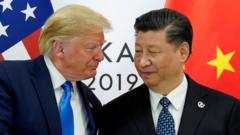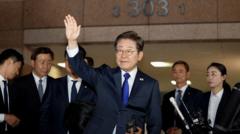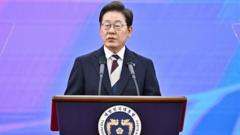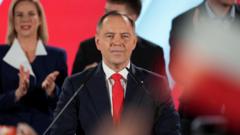With a focus on domestic growth, India’s cautious trade approach faces scrutiny over future competitiveness amidst rising tariffs.
**India's Trade Strategy: Riding Out Tariff Storms or Missing Opportunities?**
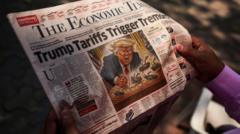
**India's Trade Strategy: Riding Out Tariff Storms or Missing Opportunities?**
Amid increasing protectionism, India’s trade policies may fortify its economy against global downturns.
India, recognized as the fifth-largest and rapidly expanding major economy, is balancing a dual identity: while its high tariffs and historical protectionism have limited its global trade engagements, they may also position the nation advantageously as other countries grapple with tariff-induced challenges. Economists assert that India's robust domestic market allows it to withstand global economic pressures more effectively than countries reliant on exports. Rajeswari Sengupta, from the Indira Gandhi Institute of Development Research, emphasizes that India's lower participation in international trade could enhance its relative strength, especially if export-driven nations slow down.
However, historical patterns reveal a complex trajectory into trade liberalization, starting from protective measures enacted post-World War II to the 1991 shift towards openness. Scholars like Arvind Panagariya recount how India's import-substitution strategies hampered its competitiveness, with a drastic reversal occurring in the early '90s, leading to a surge in exports. Despite these gains, there has been a noted regression, with protectionist measures resurfacing in the face of international pressures.
Critics warn that Prime Minister Narendra Modi's "Make in India" initiative has faltered due to a lack of competitiveness stemming from years of high tariffs, a situation exacerbated by allegations of cronyism and inefficiency within protected industries. Meanwhile, as the United States recalibrates its trade relationships, particularly under the Trump administration, India's potential as a reliable trade partner within the global market appears to be increasingly relevant.
Economists advocate for a strategic reduction of tariffs and a boost in export capabilities in sectors like textiles and toys as essential to seizing this moment. Nonetheless, as USD 7.76 billion in trade to the US hangs in the balance due to current tariff policies, the spotlight remains on whether India can successfully navigate these challenges without sacrificing growth opportunities both locally and internationally.
In this intersection of protectionism and opportunity, only decisive reforms and international engagement will determine India's path forward.
However, historical patterns reveal a complex trajectory into trade liberalization, starting from protective measures enacted post-World War II to the 1991 shift towards openness. Scholars like Arvind Panagariya recount how India's import-substitution strategies hampered its competitiveness, with a drastic reversal occurring in the early '90s, leading to a surge in exports. Despite these gains, there has been a noted regression, with protectionist measures resurfacing in the face of international pressures.
Critics warn that Prime Minister Narendra Modi's "Make in India" initiative has faltered due to a lack of competitiveness stemming from years of high tariffs, a situation exacerbated by allegations of cronyism and inefficiency within protected industries. Meanwhile, as the United States recalibrates its trade relationships, particularly under the Trump administration, India's potential as a reliable trade partner within the global market appears to be increasingly relevant.
Economists advocate for a strategic reduction of tariffs and a boost in export capabilities in sectors like textiles and toys as essential to seizing this moment. Nonetheless, as USD 7.76 billion in trade to the US hangs in the balance due to current tariff policies, the spotlight remains on whether India can successfully navigate these challenges without sacrificing growth opportunities both locally and internationally.
In this intersection of protectionism and opportunity, only decisive reforms and international engagement will determine India's path forward.





